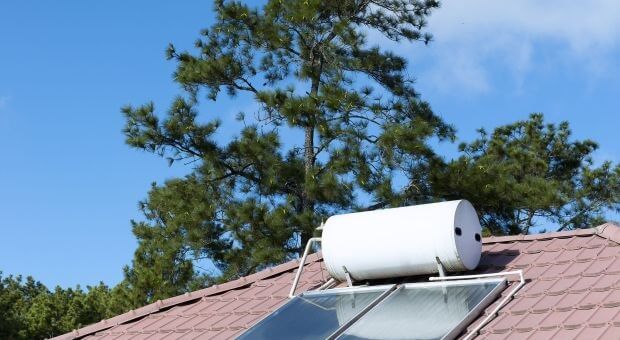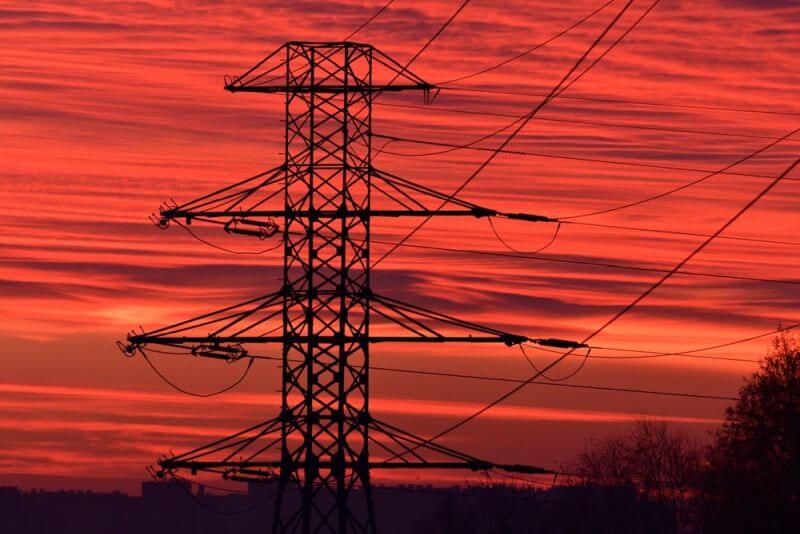- Stick with simple solutions that you could build from scratch if you lost everything. If you are prepared for that, you can come back from most challenges.
- Do not cast aside tens of thousands of years of human development. Learn how other cultures solve the survival problems they face.
- Get your hands dirty putting in dirt time trying these solutions out.
- Save information on alternative solutions to your survival library. If you have an idea of what to do, you can figure it out. Human beings come equipped with much of what they need to survive in the forms of instinct and DNA.
- Survival gear is important, but many survivalists overly focus on things. What is needed to survive is adaptability and the problem-solving skills that make some people adaptable are acquired through experience.
In my opinion, Americans tend to lend far too much credit to academia and even large corporations for innovation. In fact, the cultures of both suppress innovation. Significant innovation happens when knowledge for two or more fields is combined and both academic and corporate cultures discourage this. Significant innovation is more often the result of entrepreneurial tinkering and people facing problems needing solutions. Survivors experience this on a life or death scale. They adapt or die. Not so, in universities and corporations.
I see this action all the time. At a survival expo, an audience marveled at a safe tinder floating on water that could easily be extinguished and re-lit. Almost on cue, a hand goes up in the audience, “So did you come up with that in a university lab? Where did you to school?” Then the answer, “Oh, no … I was out coyote hunting one time and I got real cold … and ….” The man faced a problem and created a solution to his problem.
I have both witnessed and participated in this process abroad in developing nations, where I have spent months and sometimes years. My wife is from Brazil and until we met, she had never lived in a home with glass windows or hot water on tap or even reliable running water. Her parents are from two different (formerly enemy) tribes and her mother came into the city as a toddler riding in a basket on the back of a donkey.
When we are in Brazil, we live very simply. We keep a trash barrel full of water in the shower, so we can bathe when the water does not run. We also use a much better design water filter than the designs we use here in the US or Europe. It keeps the water inside it cool through evaporative cooling and we dry clothes on the coils on the back of the refrigerator when it rains because a dryer is considered a luxury and the off and on power would never be able to handle the load.
Read along and I’ll share some adaptations with you that I have learned in my travels.
Click here to find out how to survive when the lights go out!
Refrigeration
How do you keep food or medicine cool without a fridge and the power company? Sure, you could hook a 12v fridge up to a small solar system, but that is not something you could improvise if you had to or that most folks in developing nations could justify spending that much money on. Some of your science students might suggest using some sort of Ranque-Hilsch vortex-tube technology, but that is not efficient enough to be practical and how would you build the hardware? It is mostly used to cool air powered drills and other tools that push high volumes of air.
Root Cellar
What my family used before we had electricity, and even after, was a root cellar. A root cellar uses the large thermal mass of the earth’s crust and the constant cool temperature found below ground for everything from cool food and medicine to prevent decay and degradation to prolonging the life of batteries Do you keep batteries in the fridge? They will last longer if you do.
The higher the temperature, the quicker foods break down, even shelf-stable foods. If you store MREs, every 10 degrees above 60 degrees Fahrenheit cut their shelf life in half. Even while you have electricity, consider storing your food storage in an insulated pantry. My grandfather showed me how to do this as a boy. He added extra insulation to a basement room and essentially turned a room of his house into a root cellar only with the added help of modern air conditioning and a thermostat.
Digging a root cellar might sound like a lot of work to the average person nowadays, but when you have two years or more worth of food stored, that is a lot of money sitting there. Now imagine how important that food was to my grandfather, who grew and canned all that food himself in his own garden and orchard. He even built a separate canning kitchen for the task. Compared to all that work, building a root cellar is not so big a sacrifice.
A root cellar can be constructed by digging a dugout or by digging into a hillside, but in rocky terrain, it may be necessary to frame the room in masonry and mound dirt against it to create an artificial hill.
Pot in a Pot Fridge
This is a much smaller project that uses the evaporative cooling property of terra cotta to cool a space much like the water filter I mentioned in the introduction. Terra cotta pots come in a range of sizes to meet your cooling needs. If you do not have the room or suitable land for a root cellar, give this a go.
Start with two nesting pots. The interior of the smaller of the two pots is the space that will be cooled. There needs to be at least ¾” space between the walls of the two pots when nested. Fill the drainage holes in the pots with a suitable material which could be clay, cork, a plastic cup, or about any object. When I did this. I caulked an object into place to get a good seal.
Now line the larger pot with at least ¾” of clean, coarse sand. Depending on the size of the pots you select, the layer of sand can be thicker, but the layer on the bottom should be about the same as the gap between the walls of the two pots.
Nestle the smaller pot inside the larger and fill in the gap around the two with sand, leaving a gap near the top.
Now fill the sand layer with cool water and cover the top with several layers of cheesecloth or cotton cloth, tucking it down into the gap you left so it can soak up water via capillary action.
Keep plenty of cool water on hand because you will need to replace water as it evaporates. As the water evaporates from both the cloth lid and the walls of the container, it will cool the pots quite noticeably. Placing the pot in a shaded breezeway will help. The better the airflow, the cooler it will keep your food.
Expandable Icebox
Like many insulated containers, an expandable icebox can be used to keep cold foods cold or warm foods warm. What makes it more effective for the survivalist is that the insulation can be molded to the shape and size of the object you are trying to heat or cool. If you have used an ice chest for a long camping trip, you likely watched the ice and food disappear, creating a large volume that can’t be cooled and the ice quickly vanishes. This container isn’t for use with ice, because it is not designed to be waterproof, but works great with ice packs and Dutch ovens.
Ever sit in a beanbag chair full of polystyrene pellets? If you have, you know that they are great insulators. The expandable icebox is just a fabric box filled with small polystyrene pellets. The walls should incorporate several layers of cotton fabric and should be several inches thick. If you use a pattern for a fabric box with lid and a sewing machine, this project will go much faster. Instead of filling the fabric box up with polyester batting, fill it with polystyrene pellets.
Because of the nature of the pellets and the fabric walls, the box is easily expanded or collapsed to fit the size of the food you are heating or cooling and can be collapsed for storage. If you put a Dutch oven inside the box, be sure to allow it to cool sufficiently first as the cast iron has a large thermal mass and will retain heat for some time on its own.
Water
Water is heavy and necessary, so it’s in your best interest to invest the time to pipe it where you need it. Growing up in the desert Southwest helped me understand both the importance and scarcity of water.
Solar Hot Water Cistern
Solar hot water is a simple concept, water from a cistern is fed to black pipes in a shallow glass box which is set at an angle to catch maximum sunlight. Convection causes the water to circulate through the system, significantly heating the water in the cistern. Add an insulated cistern and you have hot water, which is amazing! I had one of these on one of my homes and it did not produce warm like a plastic solar shower, the water was hot. The downside is that they work best in places that get plenty of sun.
Terra Cotta Dual-chamber Water Filter
How the terra cotta water filter we use in Brazil works is much simpler than the two-pot fridge. The filter has two chambers just like American and European models like the Berkey, but instead of the walls being made of plastic or stainless steel, they are made of terra cotta.
The terracotta absorbs water through capillary action and transports a little bit of it to the walls, where it evaporates, cooling the vessel. Just like our filters, water in the top chamber is pushed by gravity through cylindrical filter elements and drips into the bottom chamber.
The difference is that the water in a terra cotta filter is much cooler and since countertop water filters are not stored in refrigerators, that is a very big deal. On hot days, the difference between a cool glass of water and a room temperature drink of water is a big deal.
If you can drill holes and change filter elements, as you will eventually have to do even with a purchased filter, you can build your own and save money. Besides, you would have to learn to replace elements and change gaskets to survive anyway, so why not build your own and use the money you save to buy more of what you need and cache it for a rainy day.
Laundry Methods
Washboard
I have done laundry on washboards in rivers and in concrete basins with a washboard molded right into the concrete. Concrete washbasins are cheap and a fixture in most lower-income households in many developing nations. The downsides are that concrete and stone washboards are very hard on clothing and that carrying baskets of wet clothing home from the river and wringing clothes by hand is very labor-intensive. It is so labor-intensive that in countries where the guys sit around in cafes smoking, drinking and watching soccer and the women engage in this hard, physical labor, there are quite a few cases of female on male domestic violence where women mop the floor with their husbands.
There are all kinds of washboards. I have seen them made of stone, concrete, tin, wood, and even plastic. I keep a little travel washboard in my toiletry kit.
Dry Bag
While backpacking with limited water, I wash clothes my dry bag using clean flipflops as agitators and this method uses very little water, which makes it a great technique to use in the desert. I heat up a little water and put in my dry bag with a little Dr. Bonner’s liquid castile soap, which is my soap, shampoo, dish detergent, and sometimes even my toothpaste, but I don’t like to use it for that. For a survivalist, it is very important that everything in your pack be very multi-use.
Plunger Washer
The dry bag is great, but for long-term washing needs, you are going to want some mechanical advantage. Perhaps the simplest way to do this is by using a plunger washer in a 5-gallon bucket. There are many types of plunger washers and they run from $20-$30 tops. In a pinch, you can use a clean toilet plunger. The idea is that it agitates the clothing and forces water back and forth through the fabric.
Plunger Washer with Mechanical Advantage
Here, all you have to do is build a simple wooden frame you can use the power of the lever to apply mechanical advantage to a plunger washer.
First, attach a long wooden handle with linkage at the top to your plunger washer.
Next, construct a wooden frame with a hole drilled in a horizontal cross member that runs about a foot above the bucket, so that the plunger handle can be passed through the hole like a piston and the vertical member of the frame provides a bracketed pivot point for a second handle which will act as a lever attached to the linkage when moved in an up and down motion.
Then, attach a second handle to the linkage to form the lever and run it through the bracketed pivot point. When pumped up and down, the lever provides a gain in mechanical advantage driving the plunger.
Wringer Washer
The wringer washer typically incorporates a washboard and basin, but designs add levers and rollers to gain mechanical advantage. Once electricity came about, some electric wringer washer hit the market. They are powerful machines and on of my aunts broke her arm in one.









Bill in Idaho | May 21, 2018
|
Hello, Prepper. You give to us a Very Useful and Interesting discussion of important things to think about – The Important Things. I am grateful. This just goes to show you what is Truly Valuable in Life – and what you can do if you set your mind to it and are Willing to Work a reasonable amount. This is a Strong Incentive. Thank You !
Jerry D Young | May 21, 2018
|
You never cease to amaze me. Well done, Cache!
Just my opinion.
Jerry D Young
Nikie | May 22, 2018
|
I am just curious but would plans for an Anderson Shelter work as a celler?
Frank | May 22, 2018
|
Very interesting subject. Basically you view survival and homesteading as one subject and you consider not the age of the technology, but the capability to utilize techniques and methods from both the past and the present. Which not only make sense, but allows one to focus on solutions rather than
Some photos or diagrams would have been nice for those who are not familiar with what you talked about. It’s difficult to build a thing from a description and I did notice a lot of words seemed to be left out which can make an article confusing and a little hard to read.
I would consider building a solar dehydrator as well as a solar heat collector and water pasteurizer or distiller. I understand your dealing with tasks and needs that are affected when their is no electricity or utilities, but if that is a long term situation then preservation of food and regular if not constant purification of water. Other emergency preparation and survival sites in addition to YouTube have free plans or video tutorials for everything one might need. Living in hot and humid Florida, keeping food, animals and people cool means a big deal and improves not only our comfort but survivability.
Diane | March 19, 2021
|
I live in a small apartment, with no laundry hookup. When I got tired of replacing the plungers for my plunger laundry washer I went to the hardware store and got a big, flat drain cover, to screw to the plunger handle, it’s been working very well for several years now.